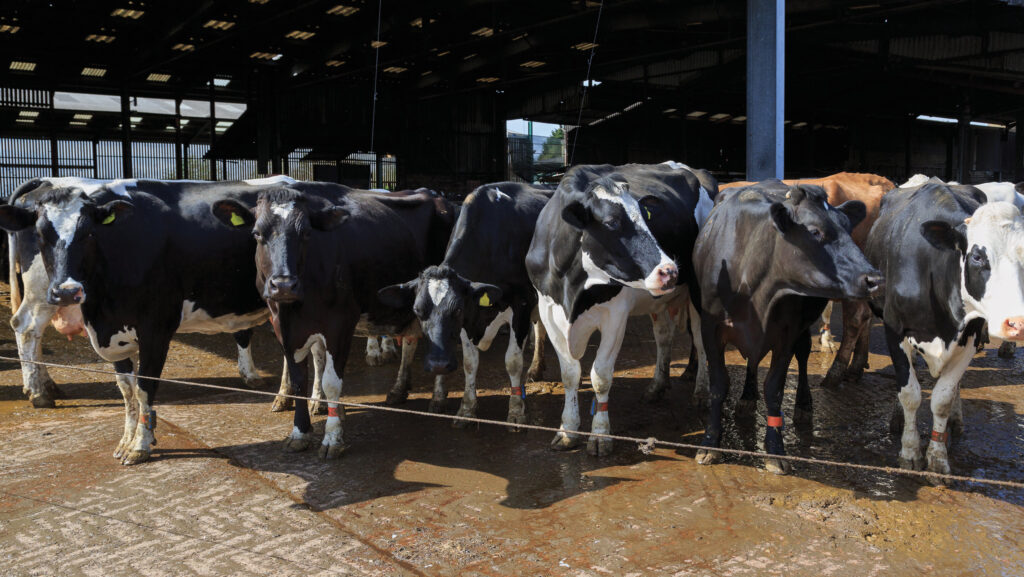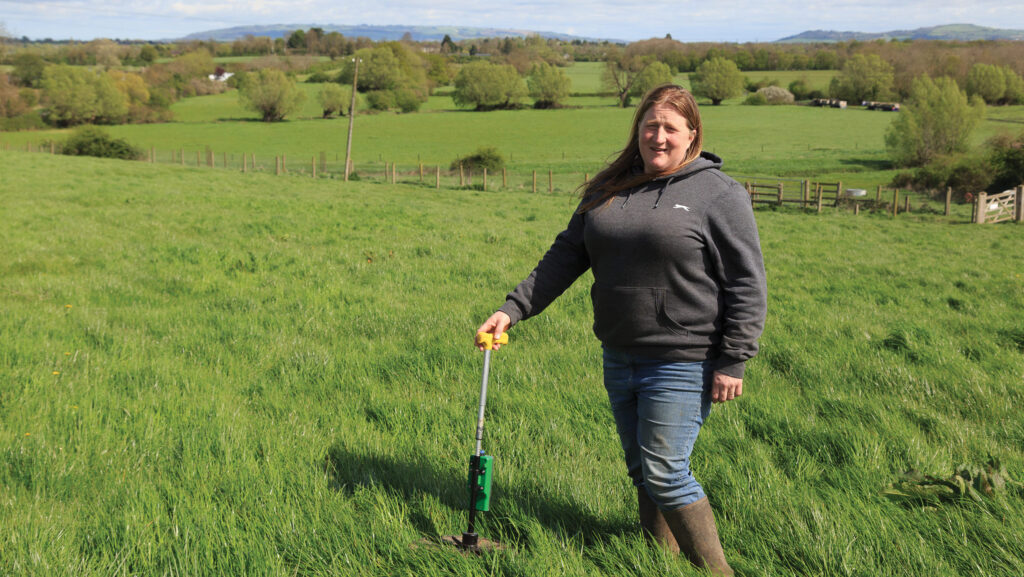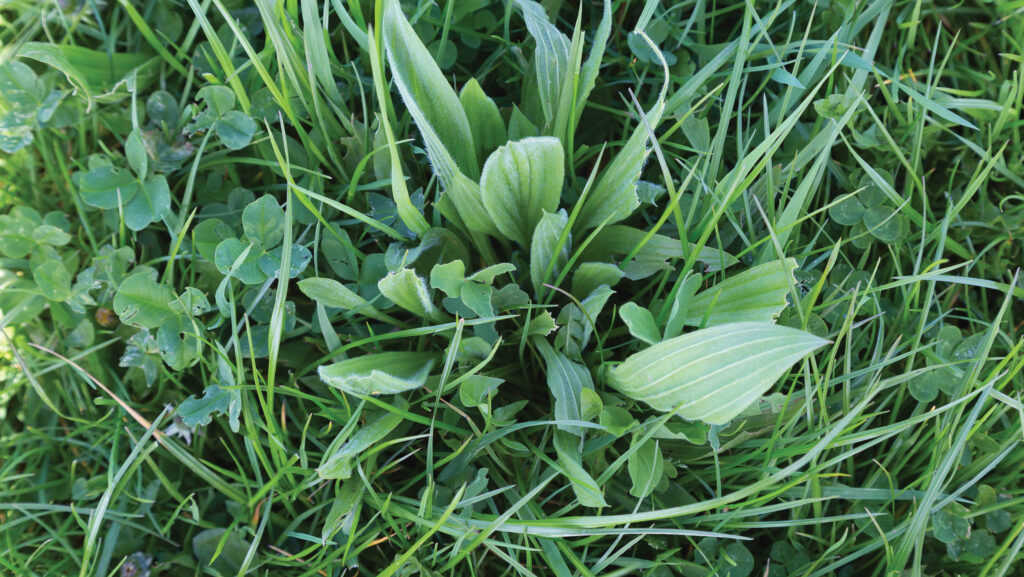Why Gloucs dairy farmer is adopting longer-grass grazing
 Norton Court Farm © MAG/Judith Tooth
Norton Court Farm © MAG/Judith Tooth A Gloucestershire dairy farmer is adapting her grazing management to make her farm more resilient as the climate changes, improving her soil health and reducing reliance on inputs.
Third-generation farmer Debbie Wilkins returned to the family farm 15 years ago with a chemistry degree, a post-doctorate in biophysical chemistry and a stint at Unilever working on spreads and ice cream under her belt.
The farm has replaced the laboratory as her focus for research.
See also: How a dairy project aims to increase farm soil carbon by 25%
“Dad was always a nature-friendly farmer, leaving big hedges and grass margins, but he was more conventional when it came to spraying wheat or spreading fertiliser,” says Debbie, who managed the farm in partnership with her father, Mike Smith, until he died suddenly two years ago.
After a difficult period of adjustment, compounded by staffing issues, Debbie now farms with her mother, Jean Smith, a new farm manager, Neil Thompson, and new herdswoman, Kim Pinner.
Debbie is using longer-grass grazing – where cows enter and exit covers at taller heights than conventionally (see “Why longer-grass grazing?”) – and increased sward diversity to help the soils at Norton Court Farm function better.
She is exploring these techniques as part of her involvement in Arla’s Regenerative Farming Pilot Network.
This four-year project involves six UK farms as well as 18 across mainland Europe.
The farmers – with a mix of organic, housed and grazed herds – all received training in the soil food web, composting and grazing management, as well as advice on regenerative practices and a tailored “handprint plan”.

Debbie Wilkins © MAG/Judith Tooth
Farm facts
Norton Court Farm, Gloucestershire
Size 380ha in four blocks, mostly owned
Mixed Dairy, beef and arable
Cattle 180 dairy cows calving year round, grazing as much as possible and housed in winter on cubicles with mattresses and chopped straw
Average yield 8,500 litres
Calving interval 370 days
Pregnancy rate 24%
Rearing Calves reared as herd replacements or taken to finishing weight
Grazing management for soil health
“We know a lot about mob grazing, or holistic planned grazing, for beef cattle, but less for dairy,” says Debbie. “We’ve had a lot of help from regenerative dairy expert Siobhan Griffin of Next Level Grazing.”
Historically, the dairy herd grazed rotationally. The system has evolved to daily moves, and grass – all permanent pasture with no reseeding in Debbie’s lifetime – has received no applications of either bought-in fertiliser, or slurry (which is used on the arable fields) for the past four years.
“Dad did all the grazing allocation,” she says. “We had a training event here and he was told off as his grazing was ‘wrong’ [the covers were considered too high]. He had never measured grass; he did it by eye.
“So, I got a plate meter and told him where to graze, using standard grazing measures [in at 2,800kg/ha, out at 1,500kg/ha]. He ignored me and carried on regardless for the next two years.”
Debbie now realises her father had been doing what Siobhan was advising all along. However, he had balanced that grazing with buffer feeding.
“He was very soft with the cows. If it was hot or raining, or if there were stock by the gate, he’d let them in to eat. So, it was a battle to keep them grazing,” she says.
Balancing act
“We discovered that if we reduced the amount of buffer cows had, they grazed much better.
“Grazing decisions depended on the weather and the field. We might go in at 4,500-5,000kg/ha, or sometimes it was the more traditional 3,000kg/ha.
“We could get them to graze down to 2,500-2,000kg/ha as long as we didn’t give them too much buffer.”
However, feeding less buffer, especially during wet summers, when cows could not eat as much forage as they needed, led to metabolic issues with high yielders and fresh calvers.
“It’s very much a balancing act,” says Debbie. “For milking cows, you need to keep the grass in a vegetative state to get performance, and if you don’t graze well enough, then the subsequent grazing grass has headed [the reproductive state] and senesced, and the quality has gone.”
Last year, grass quality was maintained more successfully by using youngstock and dry cows to tidy up covers when needed, and by keeping buffer feed (maize silage, wholecrop wheat and a concentrate to balance the grass protein content) “lowish”.
Further developments
This season, longer-grass grazing will continue, but rather than run a single group, Debbie plans to split the herd.
Fifty fresh calvers and high yielders will graze in two fields close to the yard.
These will be divided into 8-10 paddocks with rest periods of at least 25 days.
The group will have access to more buffer feed than previously, while the remaining milkers will graze without any buffer.
Longer-term, she is considering moving the herd to an autumn block to allow all fresh cows to be maintained on a high plane of nutrition during the winter, before pushing milk production from grazed grass in spring.
Other changes include growing more protein on-farm as mixed wholecrop – for example, barley/peas and wheat/beans – and incorporating more clover and vetch in the arable rotation for silage.
Debbie is also researching ways to assess plant needs in the grassland then applying biostimulants and micronutrients in a foliar feed.
“Our aim is to produce compost and clean water and no slurry,” she says.

© MAG/Judith Tooth
Why longer-grass grazing?
The purpose of longer-grass grazing is to improve soil health, says dairy farmer Debbie Wilkins.
“I think of myself as farming solar energy,” she says. “My plants are my solar panels, and my aim is to use plants to feed animals.
“If the plants are functioning really well and getting lots of energy, they will give out lots of exudates from their roots to feed the microbes in the soil.
“This allows the microbes to bring in other nutrients, and to structure the soil.
“If the whole cycle is working well, that’s great. But my soils are not there yet [though] some are better than others.
“They are not functioning because they’ve had fertiliser and slurry on them in the past.”
Longer-grass grazing and increased sward diversity are tools to help the soil function better, she explains.
“If you take the leaf too early, it’s not feeding the soil. And the longer the leaf [length] is on top, the more the root grows.
“If you graze to the floor, it takes a while for the grass to come back, and you’re not harvesting sunlight.
“If you leave the grass longer, you’re leaving more potential to harvest and it will grow back quicker. It’s a balance to get the best food for the cows.”
Species-rich hay meadows at Norton Court Farm – which have received no inputs – have a huge diversity of plants, and the soil is light and friable “like chocolate cake”.
“I want all my fields to be like these. If I left them and took one cut of hay a year with light aftermath grazing, they might get there, but I need to farm, milk cows and make a profit,” she says.
